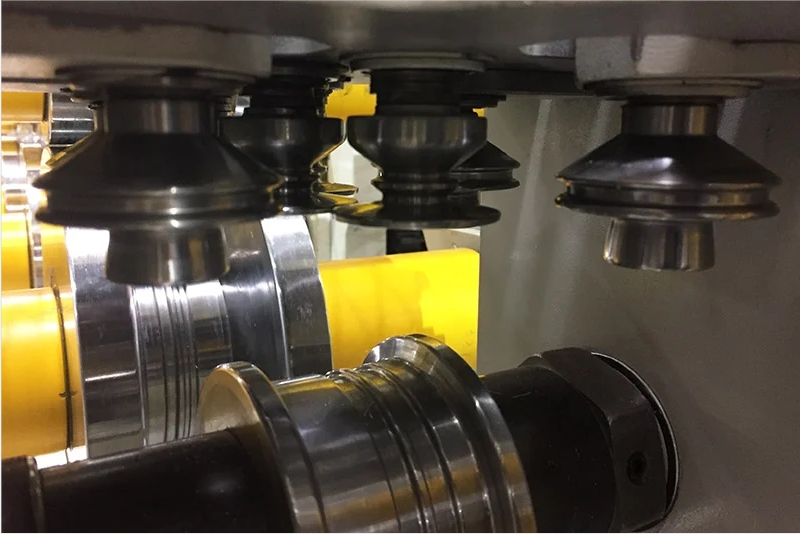Navigation Menu
Contact Us
- Email:
- info@wxavatar.com
- Address:
- Yurong Village, Yuqi Street, Huishan District, Wuxi, China.
Release Date:Jul 11, 2025 Visit:38 Source:Roll Forming Machine Factory
In the specialized world of commercial lighting fabrication, every detail contributes to the final product's quality and performance. Among these details, punching accuracy stands out as a fundamental and often underestimated factor. It's not merely about creating holes; it's about precision that directly impacts assembly, aesthetics, and the structural integrity of lighting fixtures.

The fabrication of commercial lighting involves working with various materials, including sheet metal, aluminum, and sometimes plastics, which are intricately shaped and joined. Punching, a core process in this fabrication, creates the necessary openings for components such as diffusers, lenses, electrical wiring, mounting hardware, and heat dissipation elements. The precision with which these holes are made is paramount.
Impact on Assembly and Fit
One of the most immediate effects of accurate punching is on the assembly process. When punched holes are consistently and correctly sized and positioned, components fit together seamlessly. This reduces assembly time, minimizes the need for rework, and ultimately lowers production costs. Conversely, inaccuracies lead to misalignment, forcing technicians to struggle with ill-fitting parts, potentially causing damage, and significantly slowing down the production line. In a high-volume manufacturing environment, even slight deviations can translate into substantial delays and increased labor expenses.
Ensuring Structural Integrity and Performance
Beyond simple assembly, punching accuracy directly influences the structural integrity of the lighting fixture. Properly positioned and sized holes distribute stress evenly across the material, preventing weak points that could compromise the fixture's durability over time. For example, if mounting holes are misaligned, the stress applied during installation or use could deform the material or cause fasteners to fail.
Furthermore, for fixtures incorporating heat management systems, precise punching is crucial for the effective placement of vents or heat sinks. Any deviation can hinder airflow, leading to elevated operating temperatures that can shorten the lifespan of internal electrical components and light sources. The accurate placement of openings for optical components also directly impacts the photometric performance of the fixture, ensuring light is directed as intended and minimizing unintended light loss or glare.
Aesthetic Considerations
In commercial settings, aesthetics are often as important as functionality. Lighting fixtures are not just sources of illumination; they are integral parts of a building's design. Inaccurate punching can lead to visible misalignments, uneven gaps, or components that protrude awkwardly, detracting significantly from the fixture's visual appeal. High-quality commercial lighting demands a polished, professional finish, and this is achievable only through meticulous precision in every manufacturing step, including punching.
Long-Term Reliability and Reputation
Ultimately, the commitment to punching accuracy underpins the long-term reliability of commercial lighting products. Fixtures that are built with precision are less likely to develop faults related to structural weakness or component failure. This contributes to a stronger reputation for the manufacturer, leading to increased customer satisfaction and repeat business. In a competitive market, a reputation for delivering consistent quality is invaluable.

In conclusion, punching accuracy is far more than a minor technical detail in commercial lighting fabrication. It is a critical determinant of manufacturing efficiency, product performance, structural integrity, and aesthetic quality. Investing in precise punching technology and maintaining stringent quality control standards are not just beneficial practices; they are essential for success in this demanding industry.